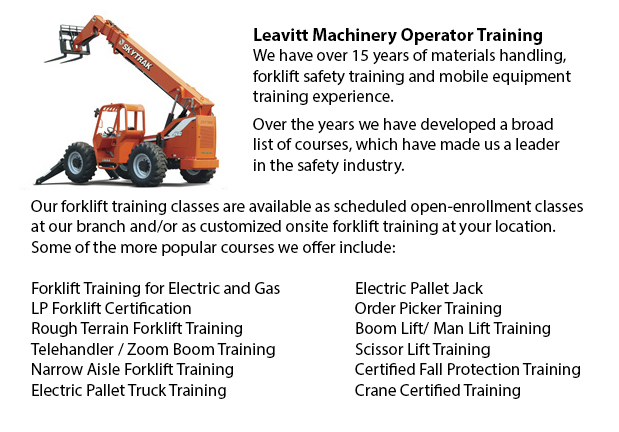
Kingston Telehandler License - A telehandler or telescopic handler is a machine that is commonly used in agricultural and industrial applications. It has the same look to a forklift and even functions in a similar way, although, the telehandler is more of a crane than a forklift. It has a telescopic boom that could extend forward and upward from the vehicle. The boom has the capability to fit one of several accessories including pallet forks, a bucket, a lift table or muck grab.
Pallet blades are the most popular accessory meant for the telehandler. This particular machine is most often utilized for moving loads to and from places which a standard forklift will find unreachable. Telehandlers are particularly helpful for placing loads on rooftops for example, or for removing palletized cargo from with a trailer. A lot of the tasks that a telehandler can carry out would otherwise need a crane and this machine can be costly, not always time efficient and impractical.
Since the boom raises or extends while bearing a load, it also acts as a lever. Despite the counterweights in the rear, this causes the machine to become increasingly unbalanced; therefore, the advantage of the telehandler is actually its greatest limitation. As the working radius increases, the lifting capacity lessens. The working radius is defined as the distance between the front of the wheels and the center of the load.
Like for example, a telehandler with a 5000 lb capacity with the boom retracted could safely lift as little as 400 lb when it is fully extended at a low boom angle. The equivalent equipment that has a 5000 lb lift capacity and the boom retracted could support as much as 10,000 lb with the boom raised to 70 degrees. The operator has a load chart to be able to help determine whether a specific lifting task could be accomplished in an efficient and safe way. This chart considers the height, the boom angle and the weight.
A lot of telehandlers come outfitted with a computer which uses sensors to be able to monitor the vehicle. These sensors would warn the operator and some are capable of cutting off further control input if the limits of the motor vehicle are exceeded. Some telehandler models are likewise equipped together with front outriggers which are known as mobile cranes. These really extend the lifting capacity of the equipment while it is stationary.
-
Narrow Aisle Forklift / Order Picker Training / Electric Pallet Jack / Electric Pallet Truck Training in Kingston
A pallet lift is a piece of equipment dedicated in the moving of pallets of various dimensions and weights. They might be utilized as an accessory for forklifts, cranes and other styles of heavy machinery or be applied on their own. Pallet lifts are... More -
Kingston Forklift Training School
Kingston Forklift Training School - Forklift Training School - Industry and federal regulators have established the criteria for forklift safety training based on their existing regulations and standards. People wishing to operate a forklift must fin... More -
Kingston Scissor Lift Certification
Kingston Scissor Lift Certification - Scissor lift platforms are utilized at work locations to enable tradespeople - such as iron workers, welders and masons - to reach their work. Making use of a scissor lift platform is usually secondary to their t... More -
Kingston Boom Lift Safety Training
Kingston Boom Lift Safey Training - Boom lifts are a type of elevated work platform or aerial lifting device that are normally utilized in warehousing, construction and industry. Boom lifts could be made use of in practically whichever environment du... More -
Kingston Fall Protection Ticket
Kingston Fall Protection Ticket - Fall-related incidents are the number one reason of death in the construction business. The possibility for fall accidents very much increases based upon the type of work which is being accomplished within your workp... More -
Telehandler Training in Kingston
Telescopic handlers normally called telehandlers for short, are an extremely popular piece of heavy construction machinery. They are widely utilized in the construction and agricultural trades. These machines have farthest reaching ability and are ab... More -
Kingston Warehouse Forklift Training Programs
Kingston Warehouse Forklift Training Programs - Warehouses could either be retail, industrial or commercial facilities, functioning from bulk product retailing to product distribution services. Regardless of the type of warehouse, personnel inside wa... More -
Kingston Heavy Equipment Ticket
Kingston Heavy Equipment Ticket - Depending on the nature of the job at hand, the kind of construction machinery that a heavy equipment operator utilizes varies. Every type of equipment is built to do particular jobs in the most effective method comm... More

Forklift Certification Kingston
TOLL FREE: 1-888-254-6157
Kingston, Ontario
forkliftcertificationkingston.com
Email Us
About Us


